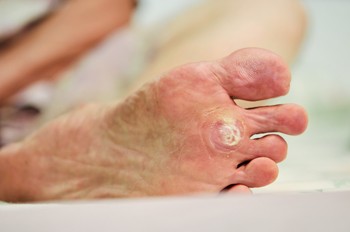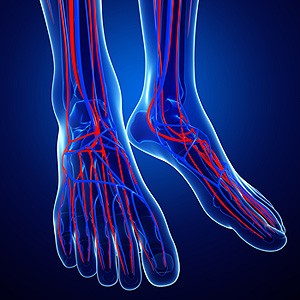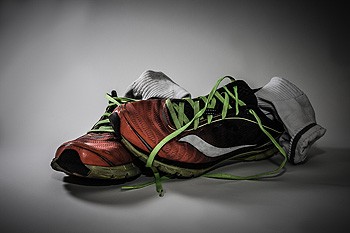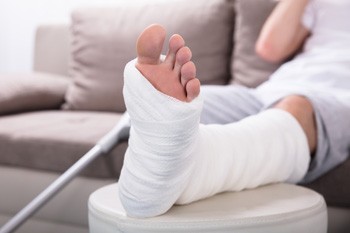 The uncomfortable foot condition that is referred to as plantar warts is caused by the human papillomavirus (HPV). It can cause damage to the top layer of the skin, and can enter the body through tiny cracks in the skin on the feet. Plantar warts develop on the sole of the foot, and grow inward as a result of the constant pressure the feet endure during walking and standing. This type of wart generally causes severe pain and discomfort, and is considered to be contagious. The fungus that causes these warts lives in warm, moist environments, which can include public swimming pools, locker rooms, and surrounding areas. Plantar warts may have small, dark spots in the center, which are actually blood vessels that feed the wart. If you have developed plantar warts, it is suggested that you speak to a podiatrist who can determine what the best course of treatment is for you.
The uncomfortable foot condition that is referred to as plantar warts is caused by the human papillomavirus (HPV). It can cause damage to the top layer of the skin, and can enter the body through tiny cracks in the skin on the feet. Plantar warts develop on the sole of the foot, and grow inward as a result of the constant pressure the feet endure during walking and standing. This type of wart generally causes severe pain and discomfort, and is considered to be contagious. The fungus that causes these warts lives in warm, moist environments, which can include public swimming pools, locker rooms, and surrounding areas. Plantar warts may have small, dark spots in the center, which are actually blood vessels that feed the wart. If you have developed plantar warts, it is suggested that you speak to a podiatrist who can determine what the best course of treatment is for you.
Plantar warts can be very uncomfortable. If you need your feet checked, contact one of our podiatrists from Biebel & DeCotiis Podiatry Associates. Our doctors will assist you with all of your foot and ankle needs.
About Plantar Warts
Plantar warts are the result of HPV, or human papillomavirus, getting into open wounds on the feet. They are mostly found on the heels or balls of the feet.
While plantar warts are generally harmless, those experiencing excessive pain or those suffering from diabetes or a compromised immune system require immediate medical care. Plantar warts are easily diagnosed, usually through scraping off a bit of rough skin or by getting a biopsy.
Symptoms
- Lesions on the bottom of your feet, usually rough and grainy
- Hard or thick callused spots
- Wart seeds, which are small clotted blood vessels that look like little black spots
- Pain, discomfort, or tenderness of your feet when walking or standing
Treatment
- Freezing
- Electric tool removal
- Laser Treatment
- Topical Creams (prescription only)
- Over-the-counter medications
To help prevent developing plantar warts, avoid walking barefoot over abrasive surfaces that can cause cuts or wounds for HPV to get into. Avoiding direct contact with other warts, as well as not picking or rubbing existing warts, can help prevent the further spread of plantar warts. However, if you think you have developed plantar warts, speak to your podiatrist. He or she can diagnose the warts on your feet and recommend the appropriate treatment options.
If you have any questions please feel free to contact one of our offices located in Holmdel and Middletown, NJ . We offer the newest diagnostic and treatment technologies for all your foot and ankle needs.











